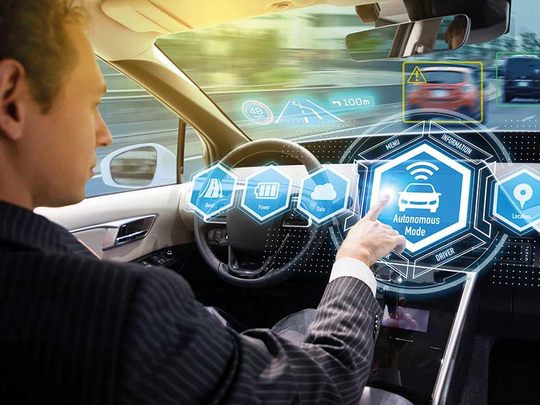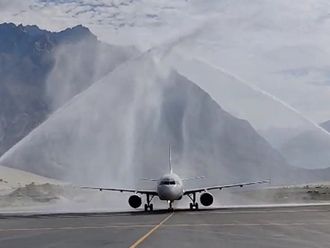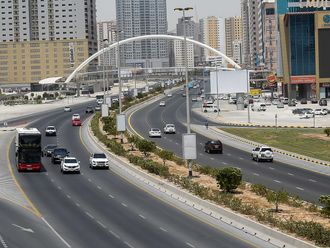
DUBAI When it comes to transportation and urban mobility sectors, technology is increasingly adding to its efficiency and the enhancement of user experiences. Gulf News speaks to mobility experts, Nadeem Shakir, Technical Director, Aurecon and Nabeel Al Zaka, Executive Director, Surface Mobility Consultants, Dubai, to read the changing landscape and interpret what lies ahead.
1.How would AI transform the way we move?
Knowing traffic conditions in real-time.
Automatically detecting incidents and abnormalities via CCTV and drone image processing.
Knowing crowd movement and patterns via cellular data.
This will transform Transportation and Urban Planning and ensure it evolves in accordance with users’ needs and demand patterns (i.e. provide the needs of the masses instead of the wants of the few).
- Nabeel Al Zaka, | Executive Director, Surface Mobility Consultants, Dubai.
For example, knowing how special events such as New Year’s Eve and Special Festivals will impact traffic, public transportation and taxis, will enable planners to design roads and allocate services where they are more needed. AI will also help plan the best routes for public transportation to ensure the biggest number of passengers are transported within the minimum number of trips.
Nadeem Shakir: AI is already a part of our lives. Ride sharing apps such as Uber are using AI to predict journey route, price and pick-up point. AI is key to the success of the transformation from manual to self-driving technologies. There are five levels of driving in terms of autonomy — on a scale of 0-5.
The rapid development in AI technologies has already reached level 4 autonomy. What does this mean? That cars can be fully driverless under controlled environments.
The transition from level 4 to 5 (which is full autonomy) is the most difficult phase for AI technology providers as very comprehensive intelligence is required to be built into vehicles so they can properly react in uncertain environments.
Dubai is the front-runner in the space of future of transportation with its plans for Automated Aerial Vehicles, Autonomous pods, Hyperloop, and a vision to achieve 25 per cent driverless transportation by 2030. This is all possible due to incredible and innovative AI technologies that will help Dubai shape its future of transportation.
2. Can the use of AI help ease congestion and mobility in big cities?
Al Zaka: AI techniques can be applied to analyse traffic data (such as travel time, queue length, congestion levels) at different times of the day/locations, and correlate it with factors which are potentially causing traffic, such as accidents, road works, road maintenance, events, weather conditions, as well as places such as schools, universities, hospitals and tourist attractions.
The data can enable scientists to uncover patterns and simulate future scenarios, to predict how the traffic conditions will be impacted by future developments, road design changes, detours, major increase in population or any other future scenario, based on the intelligence built in the model.
Shakir: Definitely. In the past, people would make their journey based on their perception or past experience and many a time, this meant that taking certain routes resulted in a significant loading of popular road corridors. It was not possible for a driver then to forecast the live traffic condition on the road. With the development of AI technologies, it is now possible to send data live to mobile devices of passengers, for example, on live traffic conditions.
This results in significant redistribution of the traffic through the diversion from the popular congested corridors to the parallel roads which are at times not well utilised.
3. How safe is AI technology in the current state of development?
Al Zaka: Given that applications of AI in the transportation industry are somewhat new, for the time being, there needs to be human verification at all stages, to ensure its accuracy and calibrate it continuously. As this matures, the level of human verification and intervention will slowly decrease to a point where it is virtually non-existent. The timeline for this is in line with the timeline for deployment of Autonomous Vehicles.
Shakir: There is a lot of work required to progress from level 4 to level 5 of autonomy. Once fully developed and accepted, the influence of AI will make our travel much safer as it can be used to predict accident blackspots and pedestrian movements, and avoid hazardous situations.
The majority of accidents occur due to human error, and with built-in smart AI technologies, such accidents can be eliminated.
4. Can you give us a glimpse of the future of mobility in believable terms?
Al Zaka: Citizens of future cities will have multiple options to choose from to be transported from point A to point B:
They will have real-time route information and will be able to schedule their next trip to a greater level of accuracy and personalisation.
They will know the different modes available to them, the cost/time associated with each option.
The environmental impact of each option (in terms of Co2 emissions and fuel consumption).
The various first/last mile connectivity options.
The possibility of finding a seat in the next ride.
The impact of each option on their health (e.g. walking /biking options will have a higher score for health-conscious citizens).
Apps/services will be more personalised and tailored with targeted information being sent to them ( i.e. user’s behaviour and pattern of travel will prescribe the best suited options for them).
Autonomous Vehicles, MaaS, Rapid Public Transit Pods (manned or unmanned) are all within our reach. It is a matter of time before they become everyone’s reality.
Shakir: We believe that in the immediate to the short term, AI technologies will become extremely dominant in the smart mobility sector (such as Mobility as Service - MaaS), and will increasingly define the way we travel from day to day.
In the medium term, we see AI technology becoming more and more acceptable for driverless vehicles to operate in certain environments such as dedicated corridors with well-defined artificial intelligence to interact with other road users.
In the long term, the vision is to have full autonomy and choice to improve quality of life for all: self-driving vehicles coupled with other journey services and smart mobility options.
THE 5 LEVELS OF AUTONOMOUS DRIVING
Level 1: Driver Assistance (Hands On). Driver and AI share control of the function.
Level 2: Partial Automation (Hands Off). AI can fully control a specific function wherein driver is required to monitor and intervene as and when required.
Level 3: Conditional Automation (Eyes Off). Drivers can divert their attention, however, they are still required to intervene when called upon by AI to do so.
Level 4: High Automation (Mind Off). Driver can safely stay away from the driver’s seat. Driver is only required to intervene during special circumstances.
Level 5: Full Automation. No human intervention is required.
— Nadeem Shakir












